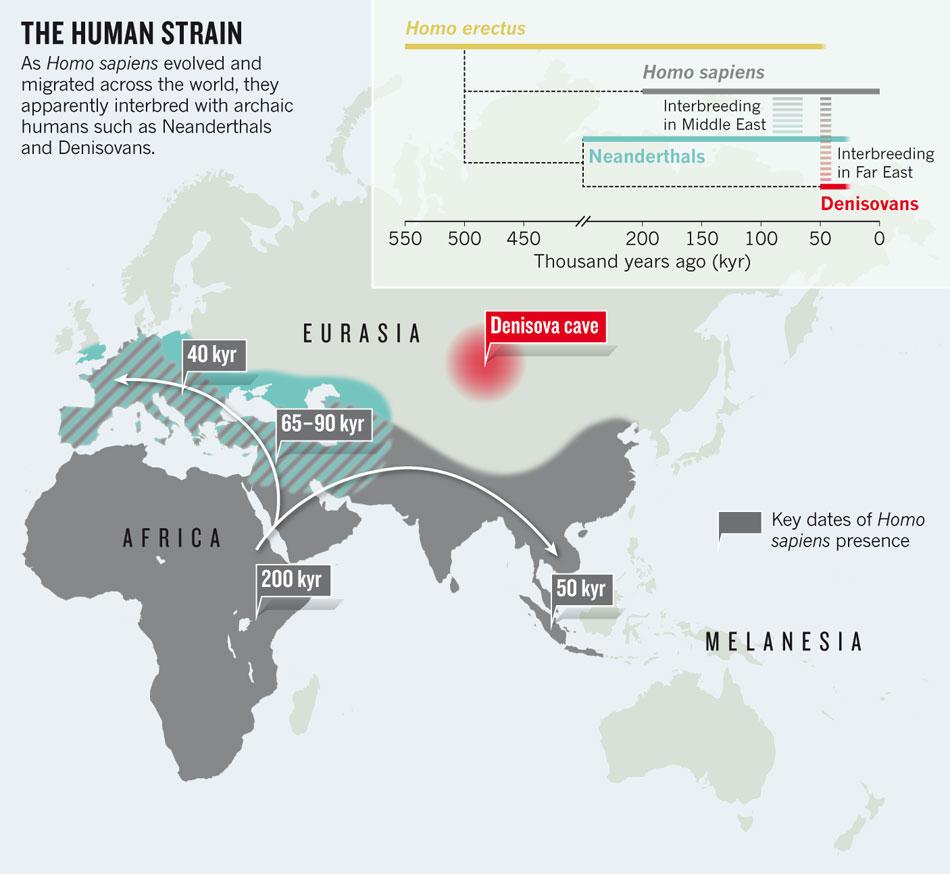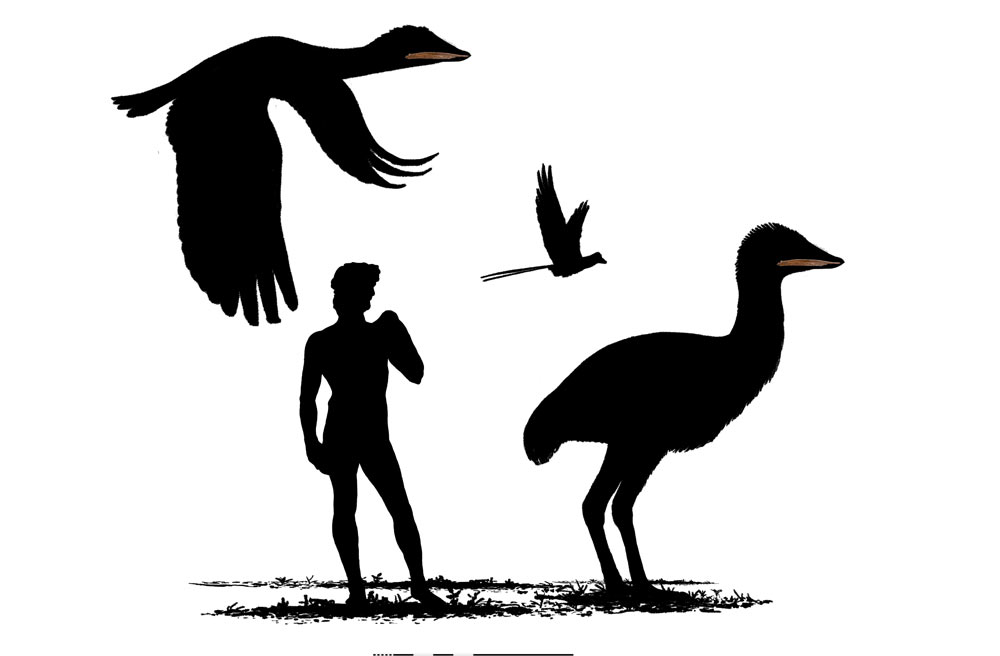
© Nature
For a field that relies on fossils that have lain undisturbed for tens of thousands of years, ancient human genomics is moving at breakneck speed. Barely a year after the publication of the genomes of Neanderthals
1 and of an extinct human population from Siberia,
2 scientists are racing to apply the work to answer questions about human evolution and history that would have been unfathomable just a few years ago.
The past months have seen a swathe of discoveries, from details about when Neanderthals and humans interbred, to the important disease-fighting genes that humans now have as a result of those trysts.
Neanderthals were large-bodied hunter-gatherers, named after the German valley where their bones were first discovered, who roamed Europe and parts of Asia from 400,000 years ago until about 30,000 years ago. The Neanderthal genome - shepherded by Svante Pääbo at the Max Planck Institute for Evolutionary Anthropology in Leipzig, Germany - indicates that their evolutionary story began to split from the lineage of modern humans less than half a million years ago, when their common ancestor lived in Africa (see
'The human strain'). In December last year, Pääbo's team released the genetic blueprint of another population of ancient humans - unlike ourselves or the Neanderthals - that was based on DNA recovered from a 30,000 - 50,000-year-old finger bone found in a cave in Denisova in southern Siberia.
2 Palaeoanthropologists call these groups archaic humans, distinguishing them from modern
Homo sapiens, which emerged in Africa only around 200,000 years ago.



